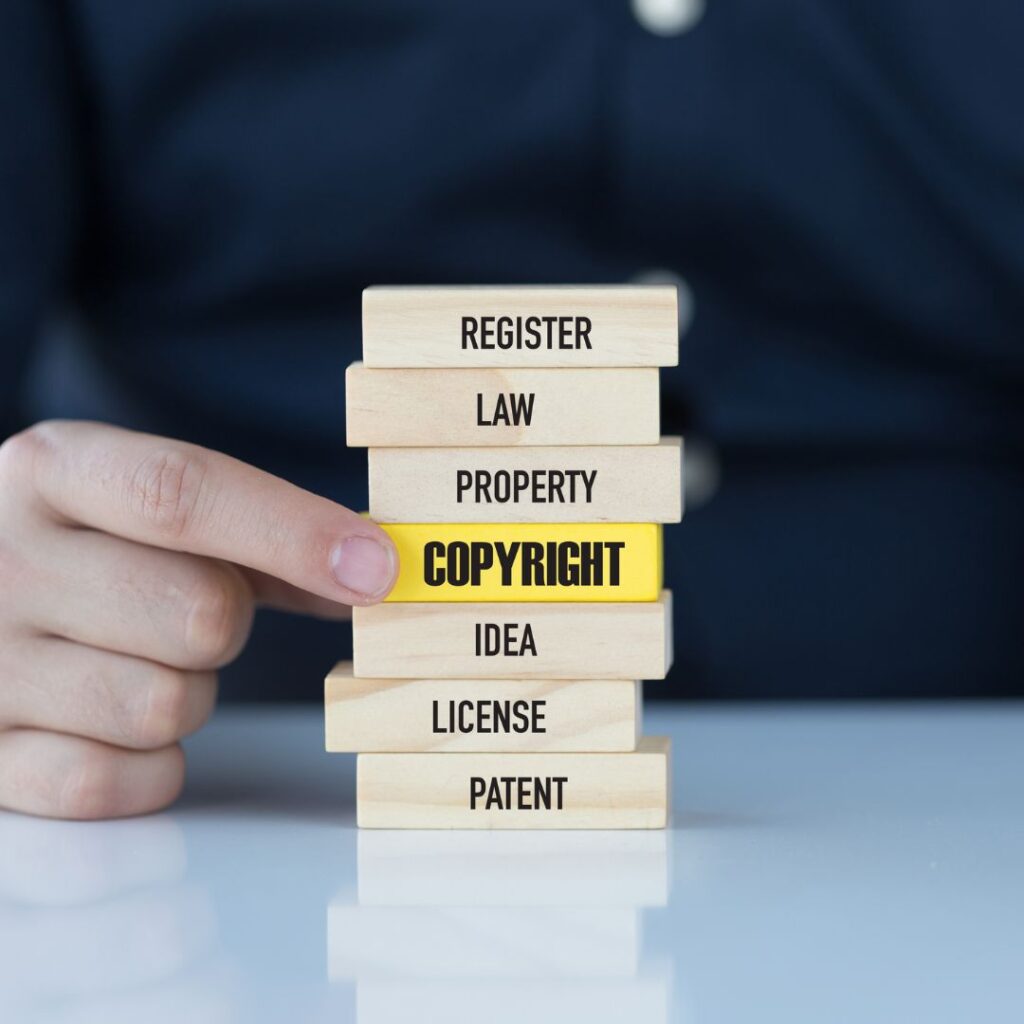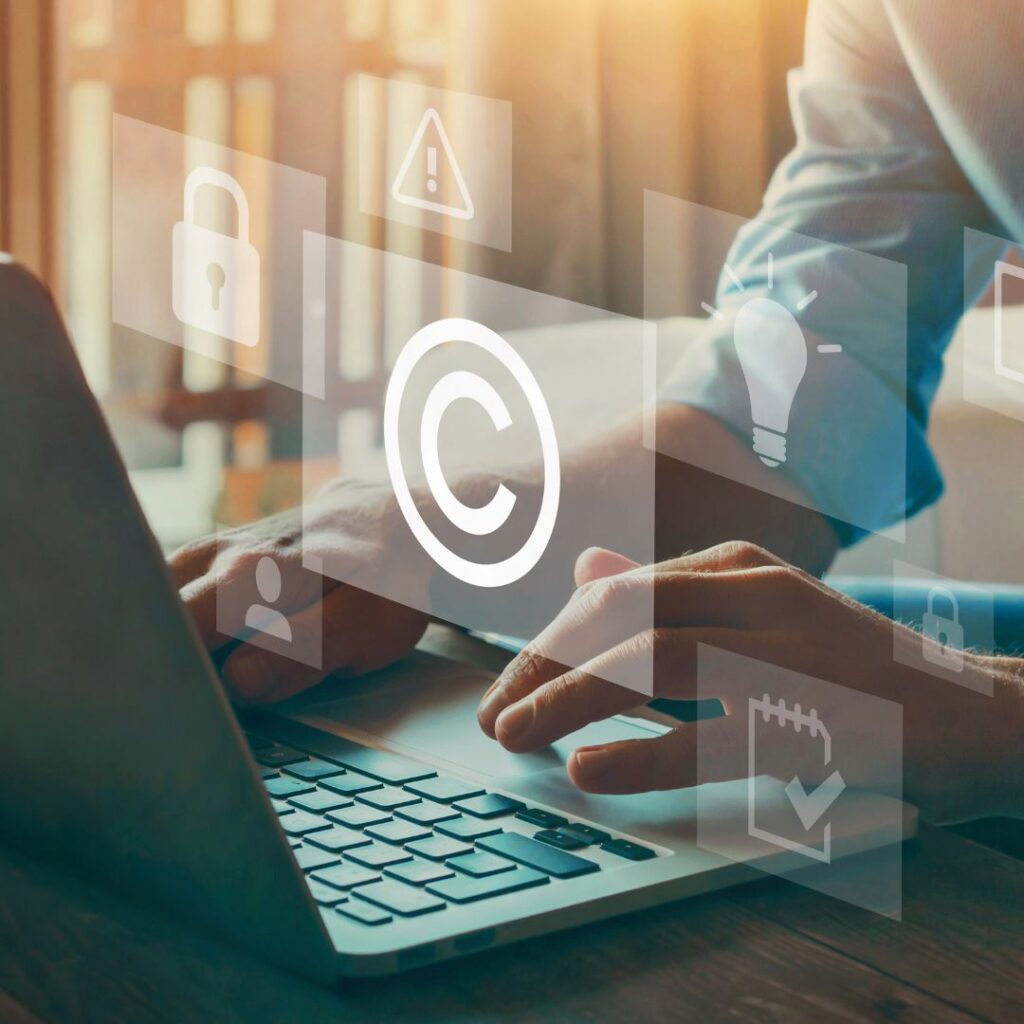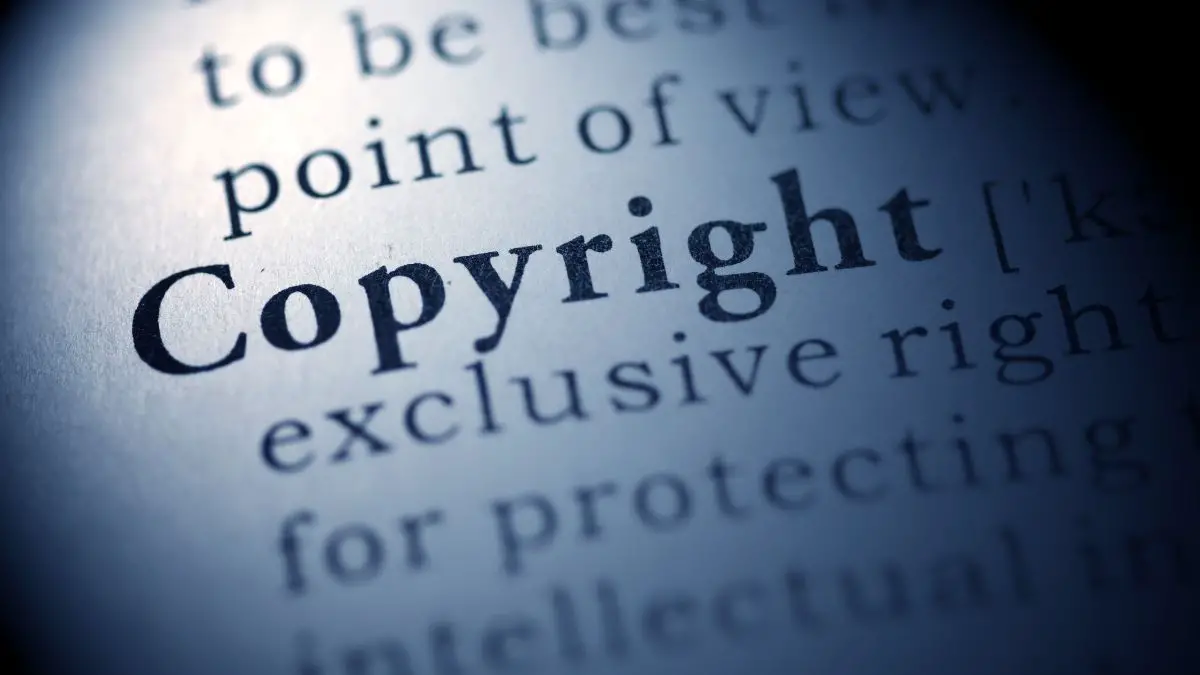Table of Contents
- Introduction
- 1. The Basics of Copyright Law
- 2. How Copyright Works in Publishing
- 3. Understanding Copyright Infringement
- 4. The Role of Publishers in Copyright Management
- 5. FAQs about Copyright in Publishing
- What is Copyright, and How Does It Apply to My Published Work?
- Do I Have to Register My Copyright?
- What Rights Do I Have Under Copyright Law?
- Can I Use Copyrighted Material in My Work?
- What Constitutes Copyright Infringement?
- What are the Penalties for Copyright Infringement?
- How Long Does Copyright Last?
- 6. The Impact of Digital Platforms on Copyright
- Conclusion
Introduction
This article explores copyright in publishing. If you are new in the publishing industry, pay attention to the write-up; it will help you in the long run.

Copyright is an important concept for anyone involved in publishing written works. At its core, copyright grants authors exclusive rights over their original creations for a limited period. This gives them control over how their work is used and prevents others from profiting from it without permission. For publishers and readers, understanding copyright is crucial as well.
When an author publishes a book or article, they typically transfer some of their copyright to the publisher. This allows the publisher to print, distribute, and sell the work. However, the author retains other rights, like making derivative works. Publishers must be careful not to infringe on an author’s copyright, while authors must understand which rights they still control.
Copyright law determines how readers can legally access published materials. It grants publishers the right to prosecute those who pirate copyrighted content.
However, copyright law also establishes legal exceptions like fair use that permit limited educational copying and commentary. Readers who wish to share passages from a book or article must understand allowable uses under the law.
In the digital age, copyright is more complex than ever before. As publishing moves online, new questions arise about reproducing, sharing, and monetizing content. Both publishers and readers must pay careful attention to what copyright law permits in this new landscape. For authors, protecting copyright is crucial to getting paid for their creativity.
This introduction shows why everyone involved in publishing must grasp copyright law basics. The following sections will explore copyright history, principles, processes, infringements, publisher responsibilities, FAQs, and the impact of digital platforms. Copyright aims to spur creativity by giving content creators exclusive rights for a time. Understanding how to respect those rights is key.
1. The Basics of Copyright Law
Copyright law originated in England in the early 18th century to incentivize authors to create new works by granting them exclusive rights over copying and distributing their works for a limited period. The first modern copyright law, the Statute of Anne, was passed in Britain in 1710 and granted authors 14 years of exclusive rights, renewable for another 14 years if the author was still alive.
Copyright law promotes creativity and innovation by benefiting creators financially from their works. It aims to balance protecting authors’ rights and allowing public access to creative works. Copyright law gives creators exclusive rights over their works, such as reproduction, distribution, public display, and derivative works. This allows them to control how their work is used commercially.
In the United States, copyright protection arises automatically once a work is fixed in a tangible medium. Registration with the U.S. Copyright Office provides additional benefits like the ability to sue for infringement. A work must be original and exhibit a modicum of creativity to be eligible for copyright protection. Facts and ideas cannot be copyrighted; only the expression of those ideas can be.
Copyright law applies to almost all published materials, including books, magazines, journals, newspapers, music, films, photographs, paintings, and other creative works. It grants the creators of these works exclusive rights to reproduce, distribute, publicly display, and create derivative works from the original for a limited period. Unauthorized use of a copyrighted work is considered copyright infringement.
Key Points
- Copyright law originated in England in the early 18th century to incentivize authors to create new works.
- It grants creators exclusive rights over reproduction, distribution, public display, and derivative works.
- Copyright protection arises when a work is fixed in a tangible form and exists automatically in the US.
- Copyright law applies to most published materials like books, music, films, art, etc.
2. How Copyright Works in Publishing
Obtaining a copyright for a published work is a straightforward process.
The creator automatically holds the copyright when an original work is fixed in a tangible medium like print or digital format. There is no need to register or apply for copyright in most countries. The copyright exists from the moment of creation.
However, registering your copyright with the appropriate government agency, like the U.S. Copyright Office, has benefits. Registration creates a public record of your copyright claim and allows you to file infringement lawsuits. It also provides evidence of ownership in case of a dispute.
The rights that come with copyright are extensive. They include:
- Reproduction rights – The exclusive right to reproduce the work in any format, like print, digital, audio, video, etc.
- Distribution rights – The exclusive right to distribute copies of the work to the public through sale, rental, lease, lending, etc.
- Public performance rights – The exclusive right to perform the work publicly, like in a play, speech, concert, etc.
- Public display rights – The exclusive right to show the work publicly, like in an art gallery.
- Adaptation rights – The exclusive right to create derivative works, like translations, dramatizations, abridgments, etc.
Copyright holders can license these rights to others. For example, an author may license a publisher the rights to print, distribute, and sell copies of their book. Or a songwriter may license public performance rights to venues that wish to play their music publicly.
Copyright lasts for the creator’s life plus 70 years in most countries. After that, the work enters the public domain, where anyone can use it freely. However, even public domain works must be credited to avoid plagiarism.
Analyzing Copyright in Publishing
In publishing, copyright is the author’s most important asset. It allows them to control how their work is reproduced and distributed. Publishers obtain licenses from authors to publish their works for a limited time, typically 5-10 years, after which the rights revert to the author.
Copyright enables authors to earn royalties from book sales and licensing. It prevents unauthorized distribution and protects the author’s creative investment. Copyright allows publishers to recoup their investments in editing, marketing, and distributing the work.
Copyright law balances the interests of both creators and the public. While it grants authors exclusivity, copyright terms are limited, so works eventually enter the public domain. The law also permits fair use for purposes like education, commentary, etc. Overall, copyright facilitates creativity and commerce in publishing.
New digital platforms are challenging traditional copyright norms. Publishers must adapt to permit wider access while protecting exclusivity. Striking the right balance is key to sustaining creativity and vibrancy in publishing.
3. Understanding Copyright Infringement
Copyright infringement occurs when someone violates the exclusive rights granted to the copyright holder of a creative work. In publishing, this can happen in a few key ways:
Unauthorized Reproduction and Distribution
Making copies of a book, article, or other publication without permission from the copyright holder is considered infringement. This includes photocopying, scanning, distributing digital copies, or uploading pirated versions online. Even sharing parts of a published work, like lengthy quotes, can infringe if done excessively.
Creating Derivative Works
Translating a book into another language or adapting a publication into a movie or TV show without authorization violates the copyright holder’s exclusive rights. Fan fiction that extensively uses settings, characters, and other elements from an original work may also be considered derivative and, therefore, infringing.
Public Performance
Performing or displaying large portions of a copyrighted work publicly without permission is also an infringement. This includes publicly reading an entire chapter of a novel, showing a video clip adaptation of a published work, or acting out a play without rights.
Consequences of Copyright Infringement
The penalties for copyright infringement can be severe. In publishing, consequences may include:
- Fines up to $150,000 per infringed work
- Jail time up to 10 years for willful infringement
- Seizure and destruction of infringing materials
- Lawsuits and payment of damages to copyright holder
- Injunctions forcing the infringer to stop violating the copyright
These stiff penalties highlight why publishers and authors must have a strong grasp of copyright law. Understanding what constitutes infringement enables proactive efforts to avoid violations. So, be aware and vigilant before you do anything with severe consequences.
4. The Role of Publishers in Copyright Management
Publishers play a critical role in managing the copyrights for their published works. As the holders of copyright, publishers have several key responsibilities:
Registering Copyright
One of the first things a publisher typically does is register the copyright for a new work. While copyright exists automatically when a work is created, registering the copyright provides additional legal benefits if the copyright is ever infringed. Publishers handle the copyright registration process on behalf of their authors.
Enforcing Copyright
Publishers actively monitor for potential copyright infringement of their works. The publisher can send takedown notices or pursue legal action if unauthorized use is detected. Having the resources and expertise to enforce copyright is essential for protecting authors’ rights.
Licensing and Permissions
Publishers facilitate licensing deals for subsidiary rights associated with a work, such as translations, audiobooks, etc. They also field third-party requests to use copyrighted content through permissions. This allows publishers to control how their copyrighted works are used and ensures authors are compensated accordingly.
Royalty Payment
For published works, publishers collect income from sales and licensed uses and then pay royalties to the copyright holder (typically the author). This administration of royalties is a major part of the publisher’s role in copyright management.
Digital Rights Management
For ebooks and digital content, publishers use digital rights management (DRM) tools to control access and prevent unauthorized distribution. DRM gives publishers more control in the digital sphere.

By handling these various aspects of copyright, publishers provide great value to authors while protecting their creative works. Effective copyright management ensures authors are rightfully compensated for their efforts.
5. FAQs about Copyright in Publishing
Copyright law can seem complex and confusing, especially regarding publishing. Here are answers to some frequently asked questions to help clarify common misconceptions:
What is Copyright, and How Does It Apply to My Published Work?
Copyright is a legal right that grants the creator of an original work exclusive rights to determine how it is used, reproduced, distributed, performed, displayed, and transformed into other formats. As the author of a published work, you automatically own the copyright to your work as soon as it is fixed in a tangible medium, such as print or digital format.
Do I Have to Register My Copyright?
Copyright registration is not required to obtain copyright protection, but it does provide additional benefits if infringement occurs. Registering your copyright establishes a public record of your ownership and allows you to file lawsuits against infringers and claim statutory damages.
What Rights Do I Have Under Copyright Law?
As the copyright owner, you have exclusive rights to reproduce, distribute, publicly display, perform, and create derivative works based on your published work. This allows you to control how others use your work and prevent unauthorized use.
Can I Use Copyrighted Material in My Work?
You can only use other copyrighted works in your publication with permission from the copyright holder. There are some exceptions under fair use where short quotes or limited excerpts may be used without permission for purposes like commentary, criticism, news reporting, etc.
What Constitutes Copyright Infringement?
Copyright infringement occurs when someone violates your exclusive rights as the copyright owner without authorization. Examples include reproducing substantial portions of your work, distributing unauthorized copies, creating derivative works, and publicly displaying or performing your work without permission.
What are the Penalties for Copyright Infringement?
Penalties for copyright infringement can include monetary damages, lost profits, injunctions to stop infringing activity, seizure and destruction of infringing works, and even criminal prosecution in severe cases. Statutory damages can range from $750 to $30,000 per infringed work.
How Long Does Copyright Last?
Copyright protection for works created after 1978 lasts for the author’s life plus 70 years. For anonymous, pseudonymous, and works made for hire, copyright lasts 95 years from publication or 120 years from creation, whichever expires first.
Understanding the basics of copyright law empowers authors and publishers to protect their creative works. While the details may be complex, these FAQs help provide a solid overview of how copyright applies to publishing.
6. The Impact of Digital Platforms on Copyright
The rise of digital platforms like ebooks, audiobooks, and self-publishing has significantly changed copyright in publishing. Publishers and authors have had to adapt to new challenges posed by the ability to reproduce and distribute content online quickly.
One major challenge is increased piracy. The ease of sharing digital files makes it harder to control copyright infringement. Publishers have responded by using DRM tools to limit illegal distribution. However, DRM restricts legitimate customers, so publishers must balance protection with accessibility.
The global reach of digital platforms also complicates copyright enforcement across borders. Publishers must contend with varying copyright laws and protections depending on where content is accessed. Strategies like geo-blocking have emerged to control regional access, but they have drawbacks.
Digital platforms have enabled new licensing models as well. Many publishers now allow excerpts or chapters to be shared for promotional purposes. However, determining optimal licensing terms requires balancing revenue generation and exposure. Getting this balance right is an evolving challenge.
Self-publishing and crowdsourced content pose new questions about rights ownership. Publishers that draw content from multiple online sources must establish clear copyright acquisition and compensation policies.
Despite these challenges, digital platforms provide invaluable opportunities to connect with readers worldwide. As technology advances, publishers must continually assess and refine their copyright strategies. Maintaining strong relationships with authors and understanding reader expectations will be key.
Challenges and Changes by Digital Platforms
Digital content can be quickly and easily reproduced, presenting challenges around piracy and unauthorized distribution. Varying global copyright laws also complicate enforcement across borders.
New licensing models enabled by digital platforms offer opportunities as well as risks. Publishers must continually adapt their copyright strategies to balance protection, revenue, and relationship-building in the digital age.
Conclusion
We’ve covered a lot of ground in this exploration of copyright in publishing.
Let’s recap some key takeaways:
Copyright is essential for protecting the rights of creators and providing incentives for publishing original works. At its core, copyright aims to foster creativity and innovation by giving content creators control over how their works are used.
Understanding the basics of copyright law is important for anyone involved in publishing. Copyright arises automatically when a work is fixed in tangible form, but registering the copyright formally strengthens the rights.
Publishers play a vital role in managing copyrights on behalf of authors. They register copyrights, monitor for infringement, and enforce rights when needed. Digital platforms have created new copyright challenges that publishers continually adapt to.
For authors, obtaining copyright means you retain control over your work and can benefit financially from its distribution. As a reader, respecting copyright means valuing creators’ rights and not infringing on their livelihood.
Copyright exists to stimulate creativity and promote progress in science and the arts. By respecting copyright, we encourage authors to keep writing, publishers to keep publishing, and readers to keep reading the works that expand our horizons.
Here are some key actions we can all take to uphold copyright:
- Authors – Register your copyrights and include proper notices on your works.
- Publishers – Stay vigilant about piracy and educate authors on copyright best practices.
- Readers – Don’t share pirated copies. Support creators by purchasing and citing their works properly.
With greater awareness and care around copyright, we help keep quality content flowing to enrich our society. The publishing world thrives when copyright is respected.

6 thoughts on “Copyright in Publishing: 6 Things to Know”